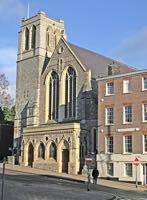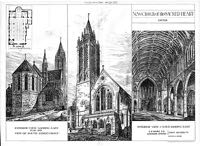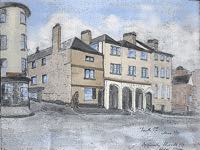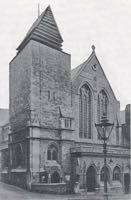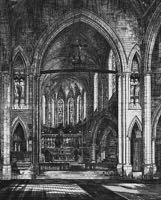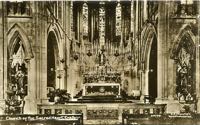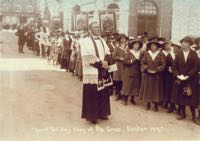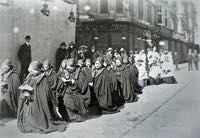
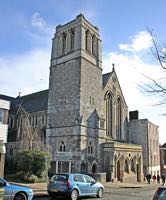 Sacred Heart Church–South Street
Sacred Heart Church–South Street
Page updated 31st January 2017
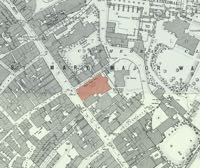 This Catholic Church is built on the site of the Bear Inn, the former town house of
the Abbots of Tavistock. It replaced St Nicholas' the first catholic
church in the city after the reformation, founded in 1791 when Roman Catholics were allowed to freely worship after 250 years of prohibition.
This Catholic Church is built on the site of the Bear Inn, the former town house of
the Abbots of Tavistock. It replaced St Nicholas' the first catholic
church in the city after the reformation, founded in 1791 when Roman Catholics were allowed to freely worship after 250 years of prohibition.
The
tower, which is 140 ft high, was not completed until 1926 – the
original design shows a pointed spire on the tower. It contains a
single bell of 20 cwt. and was cast by Murphy. The church in a French,
Gothic
style, it incorporated a 15th-century window from the Bear Inn on
the staircase leading to the choir loft.
Nikolaus Pevsner, did not take to the building and said it 'not worthy' of Stokes. It does
appear
to be a little cramped on its site in South Street, with the slope
making it a rather squat. The tower has an air of the unfinished about it.
The interior uses a variety of materials including Pocombe, Bath
Corsham and Portland stone. The stained glass windows were made by
Frederick Drake, a local glass worker.
Some history
The Sacred Heart was designed by C E Ware and Leonard Stokes in 1881 – the church was built in 1883/4 at a cost of approximately £10,000. It was opened on 18 November 1884 with a Pontifical High Mass by the Rt., Reverend the Bishop of Clifton, and a sermon delivered by the Bishop of Plymouth. Interest was great, and an admission fee of between 1s and 5s was charged to attend the ceremony. At 2 o'clock there was a public luncheon at the Royal Public Rooms. Oddly, the advert proclaiming the opening gave the address as North Street. The Right Rev. Monsignor Provost Hobson, the first parish priest retired in 1911.
Father George Oliver, who became known for his book 'History of the City of Exeter' published in 1861, was the parish priest during a large part of the 19th Century. He gained a reputation for the work he did, relieving the victims of the cholera in 1832. Grateful parishioners presented him with a silver salver and altar cruets for his humane work.
For many years, at Easter, the procession of the Way of the Cross was held through the streets of the city. In 1939, the Exeter and Plymouth Gazette described the procession thus:
"WAY OF THE CROSS." Exeter Roman Catholics' Procession.
Holiday traffic was halted in Exeter on Good Friday when nearly 300 Roman Catholics knelt at prayer in the city streets during the annual "Way of the Cross." The sacred function has been performed 20 times previously and four times at Newton Abbot. The procession started from the Church of the Sacred Heart, and headed by Father T. Barney (priest-in-charge) and Fathers F. Dalment and M Walsh (curates), and Canon J. Lee the procession proceeded through South-street to High-street and Southernhay before returning to South-street. Fourteen halts, corresponding to the stations of the Cross in the church were made, and prayers appropriate to each station were recited. Between the stops the procession chanted "Stabat Nater." The procession was headed by a life-size figure of our Lord Jesus Christ, carrying his cross, and was followed by the "Five Wounds Banner." Accompanied by the usual religious pageantry, the ceremony lasts for more than hour, ancl at the end those taking part assembled in the church to offer prayers for those who had died during the past year.
The church was spared the bombs during the 1942 blitz, because the parish priest at the time, the Rev. Fr Thomas Barney stood on a roof between the church and the Baptist Chapel, picking off the incendiary bombs that fell on either roof. Due to his bravery, the destruction in South Street remained on the west side of the street. Father Barney was also responsible for completing the tower, and installing electric lighting in the church. He died in 1947, aged 77.
Source: Kelly's 1897, ECC Timetrail, Around the Churches of Exeter by Walter Jacobson.The British Newspaper Archive.
│ Top of Page │
